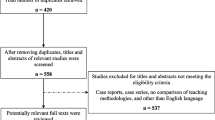Abstract
Introduction
Over half of prehospital deaths in low-income countries are the result of airway compromise, respiratory failure, or uncontrolled hemorrhage; all three conditions can be addressed using simple first-aid measures. For both hospital personnel and laypersons, a basic trauma resuscitation training in modified ABCD (airway, breathing, circulation, disability) techniques can be easily learned and applied to increase the number of first responders in Mozambique, a resource-challenged country.
Methods
A trauma training session was administered to 100 people in Mozambique: half were hospital personnel from 7 district medical centers and the other half were selected laypersons. This session included a pre-test, intervention, and post-test to evaluate and demonstrate first response skills.
Results
Eighty-eight people completed both the pre- and post-tests. Following the education intervention, both groups demonstrated an improvement in test scores. Hospital personnel had a mean post-test score of 60 % (SD = 17, N = 43) and community laypeople had a mean score of 51 % (SD = 16, N = 45). A t test for equal variances demonstrated significant difference between the post-intervention scores for the two groups (p = 0.01). All 100 participants were able to open an airway, externally control hemorrhage, and transport a patient with appropriate precautions.
Conclusion
The trauma training session served as new information that improved knowledge as well as skills for both groups, and increased the number of capable responders in Mozambique. This study supports WHO recommendations to utilize the strengths of a developing nation—population—as the first step in establishing an organized trauma triage system.
Similar content being viewed by others
References
Murray CJL, Vos T, Lozano R et al (2012) DALYs for 291 diseases and injuries in 21 regions, 1990-2010: a systemic analysis for the global burden of disease study 2010. Lancet 380:2197–2223
Global status report on road safety 2013: supporting a decade of action (2013) World Health Organization. Geneva: WHO Web. Accessed 18 Sept 2014
Gore FM, Bloem PJ, Patton GC et al (2011) Global burden of disease in young people aged 10–24 years a systematic analysis. Lancet 377(9783):2093–2102
Gosselin RA, Spiegal DA, Coughlin R, Zirkle LG (2009) Injuries: the neglected burden in developing countries. Bull World Health Organ 87:246–246a
Facts on Global Road Safety (2013) Fact sheet 358. World Health Organization. http://www.who.int/mediacentre/factsheets/fs358/en/. Accessed 18 Sept 2014
Sauaia A, Moore FA, Moore EE et al (1995) Epidemiology of trauma deaths: a reassessment. J Trauma 2:185–193
Mozambique Economic Data and Statistics (2014) World Bank. http://data.worldbank.org/country/mozambique. Accessed 17 Aug 2014
Mozambique Health Workforce Situational Analysis. (2011) World Health Organization. http://www.afro.who.int/en/mozambique/country-programmes/health-systems/human-resources-for-health.html. Accessed 17 Aug 2014
World Health Organization (2005) Training of Trainers Workshop Report: WHO Workshop with Ministry of Health Mozambique on Strengthening Emergency and Essential Surgical Procedures with linked Equipment at Rural Hospitals. World Health Organization
Romão F, Nizamo H, Mapasse D et al (2003) Road traffic injuries in Mozambique. Inj Control Saf Promot. 10(1–2):63–67
Dgedge M, Novoa A, Macassa G et al (2001) The burden of disease in Maputo City, Mozambique: registered and autopsied deaths in 1994. Bull World Health Organ 79(6):546–552
Couto MT, Tillgren P, Söderbäck M (2011) Drivers’ and conductors’ views on the causes and ways of preventing workplace violence in the road passenger transport sector in Maputo City, Mozambique. BMC Public Health 11:800
Jayaraman S, Mabqwijano JR, Lipnick MS et al (2009) Current patterns of prehospital trauma care in Kampala, Uganda and the feasibility of a lay-first-responder training program. World J Surg 33:2512–2521. doi:10.1007/s00268-009-0180-6
Suraseranivongse S, Chawaruechai T, Saengsung P, Komoltri C (2006) Outcome of cardiopulmonary resuscitation in a 2300-bed Hospital in a developing country. Resuscitation 71(2):188–193
Ozdegiz D, Mock C, Rogers RM et al (2009) Bridging the gap between public health and surgery: access to surgical care in low and middle income countries. Bull Am Coll Surg 94(5):14–20
Vos T (2009) Improving the quantitative basis of the surgical burden in low-income countries. PLoS Medicine 6(9):e1000149
Husum H, Gilbert M, Wisborg T, Van Heng Y, Murad M (2003) Land mine injuries: a study of 708 victims in North Iraq and Cambodia. Mil Med 168(11):934–940
Geduld H, Wallis L (2011) Taxi driver training in Madagascar: the first step in developing a functioning prehospital emergency care system. Emerg Med J 28:794–796
Mock C (2012) An estimate of the number of lives that could be saved through improvements in trauma care globally. World J Surg 36(5):959–963
Conflict of interest
None.
Author information
Authors and Affiliations
Corresponding author
Rights and permissions
About this article
Cite this article
Merchant, A., Outhay, M., Gonzaléz-Calvo, L. et al. Training Laypersons and Hospital Personnel in Basic Resuscitation Techniques: an Approach to Impact the Global Trauma Burden in Mozambique. World J Surg 39, 1433–1437 (2015). https://doi.org/10.1007/s00268-015-2966-z
Published:
Issue Date:
DOI: https://doi.org/10.1007/s00268-015-2966-z




